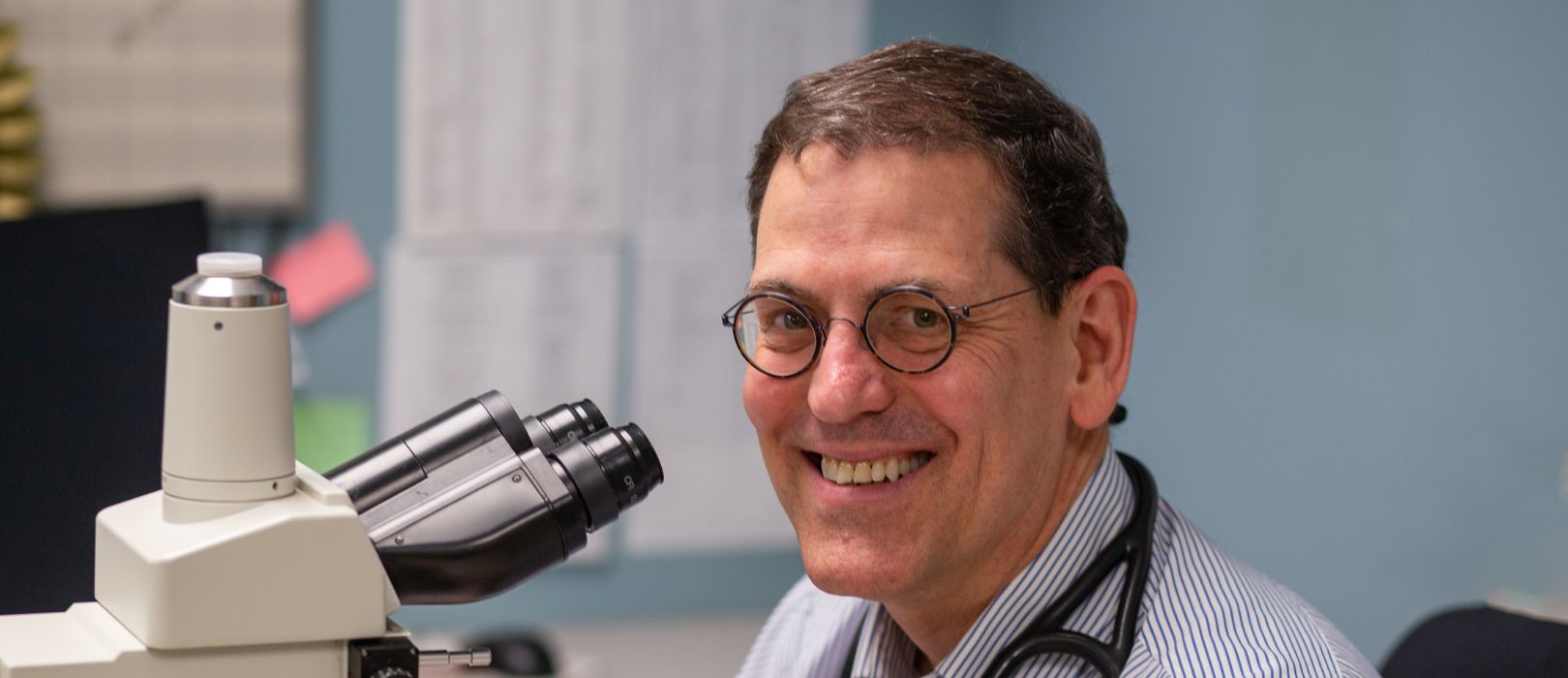HR Update

Dr. Mike Henson isn’t sure how many cases he’s seen in his 32-year tenure with the U of M’s Veterinary Medical Center (VMC). “5,000? It’s gotta be more than that. 10,000?”
If you look at the full course of Mike’s career, he’s certainly seen more than ten thousand patients. “I started working at a veterinary clinic at 14. I liked it because I could work with my hands and mind, get dirty, and work with animals and their owners,” he said. “Animal people are fun.”
A love of animals kept him in the field (when asked if he preferred dogs or cats, he said, “That’s like asking for your favorite child”), but it’s the mission that kept him at the U of M. “We train the next generation of veterinarians and practice the state-of-the-art medicine of today while generating the medicine of tomorrow.”
“I work with great people–they’re super smart, hardworking, and creative,” Mike said of his coworkers. “Plus we have all the toys,” he mentioned, citing a 3T MRI,128-slice CT, and a Varian EDGE.
Clinical Work and Research
As an oncologist at the College of Veterinary Medicine, Mike sees patients, teaches students, leads residents, and performs clinical trials using groundbreaking techniques. Applications stretch beyond animals–knowledge about animal cancers is used to inform research and new treatments for humans. “We stand on the shoulders of giants,” said Mike. “Someday someone will stand on our shoulders and do research I could never dream of.”
Mike is part of the Animal Cancer Care and Research Program. (He noted that care comes before research in the name on purpose.) “Our goal is to create a world in which we no longer fear cancer. It’s not realistic to eradicate cancer. Cancer will evolve as our treatments evolve,” he said. “Our goal is to cure where we can, reduce pain for all, improve and maintain quality of life as long as possible, educate to reduce fear, and [as needed] ease the passing of our patients.”
While Mike has seen thousands of patients over his decades at the VMC, he prefers to think about how many veterinarians he has helped train: more than 3,000.
Benefits of Working in the College of Veterinary Medicine
“There are rewards every day,” Mike says of working in the College of Veterinary Medicine, such as teaching at all levels; seeing patients; and working alongside brilliant researchers, veterinarians, technicians, and students. “Sometimes you see a spark go off [for a student or colleague] and it makes your day.”
Additionally, Mike appreciates that the University retirement automates retirement savings for him. [Through the Faculty Retirement Plan, the University contributes 10% while the employee contributes 5.5%.] He also is happy with the health insurance choices. A benefit he would love to use but hasn’t had the chance? “I fantasize about taking classes through the [Regents Tuition Benefit Program]. There are so many fun things to do and learn.”
And finally, Mike loves living in the Twin Cities. “I have three lakes within walking distance of my house,” he said. “It’s easy to get outside, and we have parks everywhere. It’s great for cycling.” He likes that there are so many great restaurants, music venues, dog parks, and sports teams in the metro area. “We have everything.”